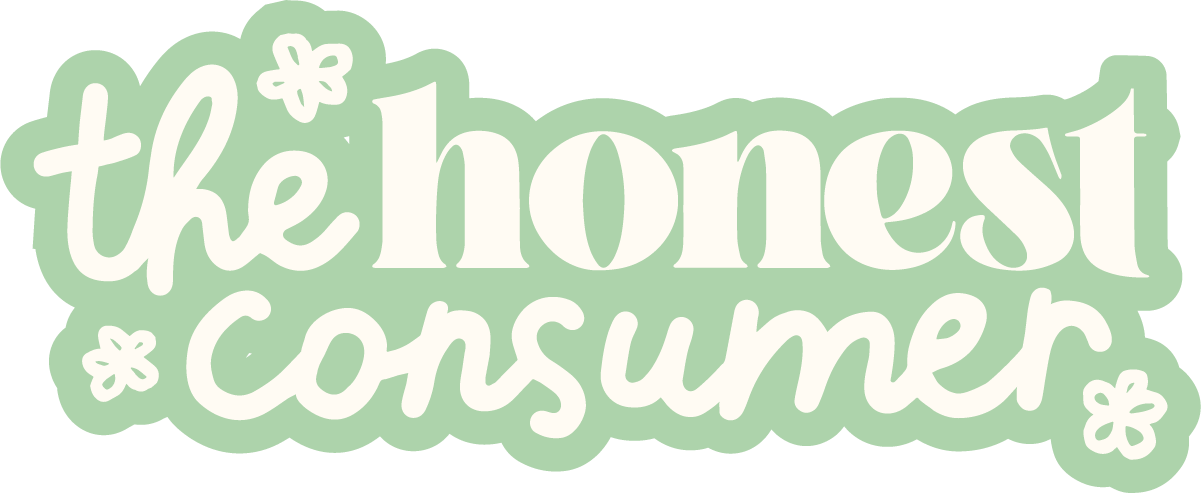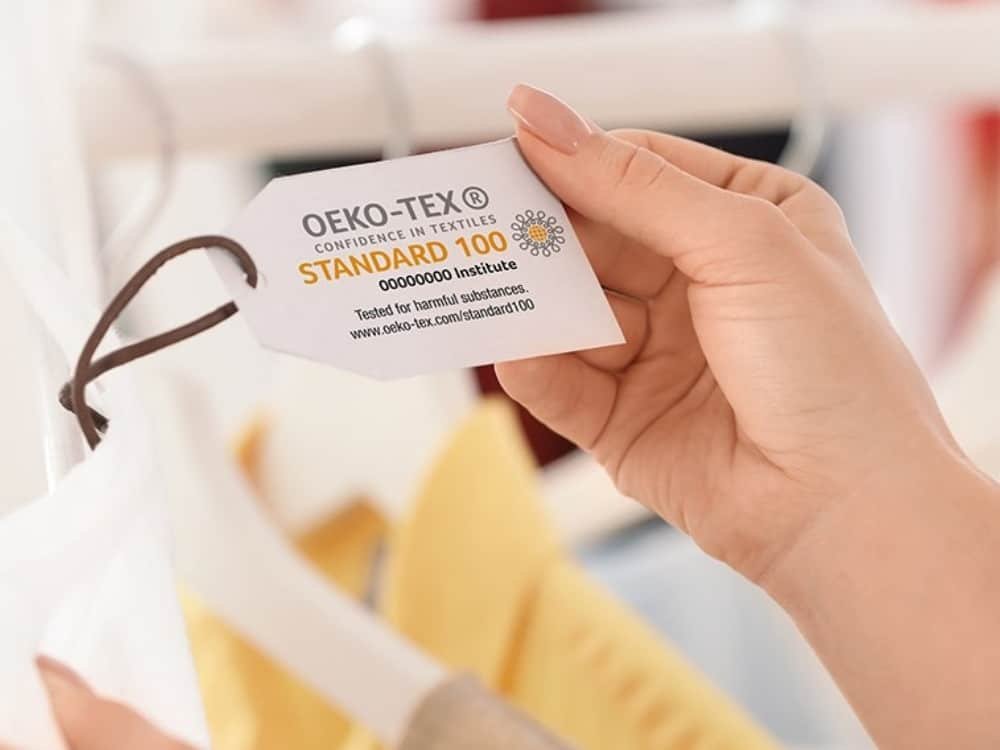What Does the OEKO-TEX Label Mean? The Beginners Guide
With the growing interest in sustainability and purchasing less toxic products, consumers are looking to support businesses that not only take ethical and eco-friendly practices into account, but also the safety of the products we wear.
Like a lot of clothing, home textiles such as bedsheets and towels come into direct contact with our skin. When these are made with heavy amounts of chemicals, it can be potentially unsafe.
Pin this OEKO-TEX guide for later
So how do we know if the clothing and other textile goods we’re buying are safe?
One of the most solid steps you can take is to look for certifications and labels that ensure products have been made as safely as possible.
OEKO-TEX is a pretty common one! Let’s explore!
And be sure to watch my video exploring the OEKO-TEX label with choosing safe home textiles.
What is the OEKO-TEX label?
One of the most renowned is OEKO-TEX. Based in Zurich, Switzerland and started in 1992, OEKO-TEX is a third-party verifying that a product has been tested for toxic substances and deemed safe for use.
They verify textile products, not only clothing but also home textiles like bedding and bathroom accessories, furniture upholstery, and leather goods.
Working as a guide for consumer safety, they test not only textiles but their component parts too.
They do not manufacture any products themselves, instead testing and labeling those of others against stricter and more comprehensive criteria than many other national and international standards.
Whether natural or synthetic, any textile can be tested. This can range from testing threads all the way to the finished product itself.
Since component parts like buttons, zippers, linings, and even coatings are tested, materials such as metal, plastic, foams, and glass get tested too.
Criteria and standards are updated annually based on new scientific findings or statutory requirements, which means businesses must update their label every year.
Tests are conducted by independent institutes in Europe and Japan, and are followed by site visits.
Different Types of OEKO-TEX Labels
Different kinds of labels exist under OEKO-TEX. Let’s take a look at them below.
STANDARD 100
This is OEKO-TEX’s most well-known label. Products bearing this label are safe from high levels of more than 100 harmful substances – both regulated and non-regulated – known to be dangerous to people and the environment.
The list of substances is updated annually.
Products tested include clothes, shoes, and home textiles.
The substances tested for by STANDARD 100 include formaldehyde, nickel, azo dyes, pesticides, phthalates, and PVC. Since textiles and products can’t all be tested in the same way, four classes exist under the STANDARD 100 banner. These are:
Product class 1: Baby products.
Product class 2: Products that come in direct contact with the skin like underwear, shirts, towels, and mattresses.
Product class 3: Products that have little to no skin contact like jackets, coats, and belts.
Product class 4: Decoration materials like furniture upholstery, curtains, and tablecloths.
The limits of chemical substances allowed vary depending on the above classes, with Class 1 being the strictest. These are products that come in contact with a baby’s skin, which is more sensitive than an adult’s.
To illustrate: formaldehyde is prohibited in Class 1, but certain concentrations are allowed in the rest. Be mindful that STANDARD 100 is concerned with the safety of textiles and final products.
It does not take environmental management, social responsibility, or supply chain transparency into account.
LEATHER STANDARD
This standard is similar to STANDARD 100, but is specifically for leather products including clothing, and accessories like gloves and bags.
Some skins (like sheepskin, lambskin, and cowskin) are also tested; however, they do not test exotic leathers or leather from protected animals like crocodiles, snakes, and armadillos. Any parts not made from leather are tested against STANDARD 100 criteria.
ORGANIC COTTON
This standard ensures that cotton products have been made – from farm to final product – with no GMOs and are tested for harmful substances.
STeP
While STANDARD 100, ORGANIC COTTON, and the LEATHER STANDARD approve textiles and end products, STeP (Sustainable Textile & Leather Production), explores production facilities, checking for environmentally friendly processes, as well as safe, healthy, and socially responsible working conditions.
This label needs to be renewed every three years.
MADE IN GREEN
This is a traceable label that ensures products have been made under environmentally friendly and socially responsible conditions. For a product to gain this label, it needs to be approved by one of the above textile standards and by SteP.
The handy Label Check tool helps increase transparency: by entering a product number or QR code into the tool, you can verify whether the OEKO-TEX label is official.
ECO PASSPORT
This label system is for manufacturers of process chemicals and chemical compounds. It analyses and tests the individual ingredients of a chemical product for harmful levels.
RESPONSIBLE BUSINESS
This is a management tool that helps businesses in the textile and leather industries meet due diligence requirements, requiring them to take legal responsibility for human rights’ and environmental violations in their global supply chains.
Does OEKO-TEX mean Organic?
Not necessarily. OEKO-TEX tests products for toxicity and certain levels of chemicals are allowed. They also allow the use of GMOs, as well as certain synthetic fertilizers and pesticides.
Moreover, they test both natural and synthetic materials; and some textiles, while sourced from natural materials, cannot be organic by virtue of how they are made.
Rayon, for example, is a fabric made from wood pulp, but is processed by chemicals, which means it cannot be termed organic. But it can be tested by OEKO-TEX, to check whether the levels of chemicals in the end product are safe.
For cotton products that have been certified organic, look for the OEKO-TEX ORGANIC COTTON label. Alternatively, you can also check for the GOTS (Global Organic Textile Standard) label.
The latter certifies organic textiles, also testing for harmful substances.
If you have further concerns or inquiries – whether about product safety, environmental management, or social responsibility – look for additional labels such as B Corporation, Forest Stewardship Council (FSC), or fair trade certifications like Fair Trade International and Fair Trade USA.
The process is not perfect. This third party label is voluntary and comes at a cost, meaning businesses have to apply and pay for their products to be tested (annually, not once-off), which not all can afford.
Thus it can be helpful to find out what else businesses are doing to be safe, ethical, and environmentally friendly.
This may include using recycled materials, following humane and cruelty-free practices, and utilizing responsible packaging. It’s especially helpful to look out for these practices if you want to support smaller businesses that are not able to afford certification yet.
Meet the Author
Claudia Hauter is a South African writer, copy editor, and content creator with degrees in Drama and Anthropology. She works in television managing web content. When she isn’t reading or writing, she’s walking her dog, finding small businesses and markets to support, or attracting butterflies and bees with her vegetable garden. Learn from Claudia on Twitter or Instagram.
More Conscious Consumer Content to Read:
The Ultimate Guide to Understanding B Corporation Certified Brands
The Ultimate Guide to Understanding the Different Fair Trade Certifications
The Beginners Guide to Understanding Regenerative Agriculture
For more ethical & sustainable tips be sure to explore more conscious lifestyle blog posts, follow The Honest Consumer on social media, subscribe to our newsletter, & check out the Ethical & Sustainable Brand Directory.







